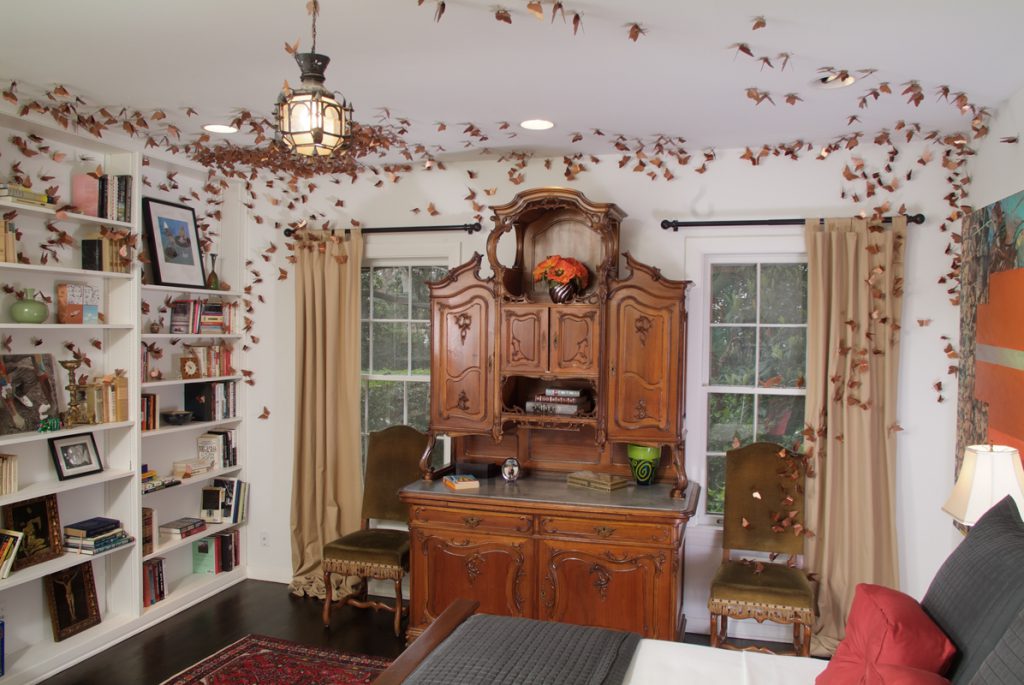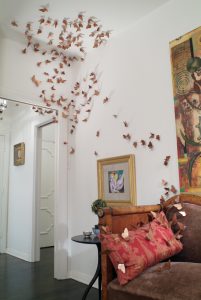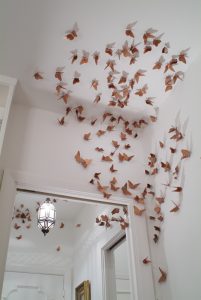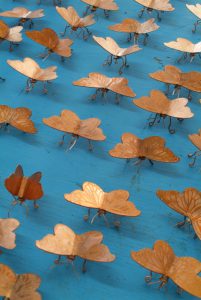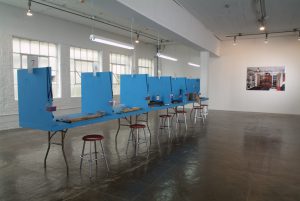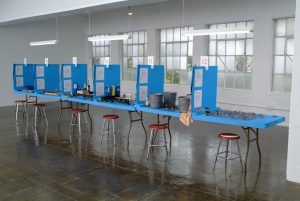Craft of Resistance
Cabrera’s Artpace project, The Craft of Resistance, is the second in a series of works that explore the impact of border politics on Mexican craft-making traditions. The installation portrays the metamorphosis of Mexican tradition, history, and culture as a result of the current maquiladora-based economy.
Before establishing the first element of her Artpace installation—a makeshift factory in her Artpace studio—the artist traveled to Santa Clara del Cobre, Michoacán, Mexico, to research traditional copper craft-making techniques. While in Santa Clara, Cabrera worked with artisans and teachers at the craft school El SECATI to learn how to manipulate the metal.
Upon her arrival at Artpace, Cabrera put together a mock maquiladora, gathering a team of local volunteers to begin working on the assembly-line production of thousands of copper monarch butterflies. Her factory setup parallels the interior of maquiladoras found in Mexico with its fluorescent lighting and long makeshift tables. The workplace is divided into twelve schematic cubicles that guide volunteers through each step of the fabrication process.
After the team fashioned 2,500 butterflies, the small sculptures were packaged and exported to a private home in San Antonio, the second element of Cabrera’s Artpace project. Pictures of this installation are presented in the gallery, showing the beautiful, yet plague-like flock massed on chairs, tables, and appliances. The presentation of the insects in an area separate from the gallery symbolizes the disparity between the production of goods in maquiladoras and the consumption of Mexican-made products in the United States. Similarly, the swarm represents the manic transformation of the Mexican economy, expressing the threats posed by an oversaturated market (complicated by competitive Chinese labor) and the flight of the younger generation from rural to urban centers on both sides of the border.
The monarch butterfly is known for its lengthy annual migration, which spans North America, from Canada to sanctuaries in Michoacán. For Cabrera, the perseverance of these insects draws a direct parallel to the perilous journey of thousands of Mexican immigrants to the United States. The copper sculptures are imprinted with the wing pattern of the monarch butterfly on one side and with an impression of the American penny on the other. This design emphasizes the influence of American currency on the cultural and economic climate of Mexico.
